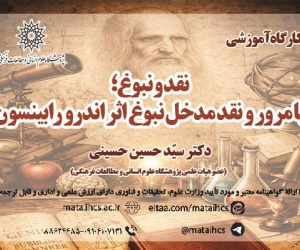بازشناسی کاربرد طلق در هنر ایرانی (مقاله علمی وزارت علوم)
درجه علمی: نشریه علمی (وزارت علوم)
آرشیو
چکیده
تزیین کاخ ها، بناهای عمومی و خصوصی در دوره ی صفوی رونقی فراوان داشت، چنانچه آرایه های گوناگونِ به کاررفته، شامل انواع مختلفی در طرح و نقش و اجرا است که با وجود پژوهش های بسیار، اطلاعات کاملی درباره ی چگونگیِ همه انواع این تزیینات وجود ندارد. تحقیقات در این زمینه نیز اغلب پیرامون انواع شیوه های رنگی و پرکار است، و شناختِ تزیینات ساده تر به نوعی در سایه و حاشیه قرار گرفته است. در میان همه ی گونه های تزیینات در دوران صفوی، برخی از سطوح به صورت ساده و سفیدرنگ با جلوه ای صدف گونه و درخشان تزیین شده اند. هدفِ این پژوهش شناساییِ نوع ماده ی بکاررفته برای ایجاد چنین جلوه ای در کاخ هشت بهشت و یکی از خانه های تاریخی اصفهان است. شناسایی این شیوه ی تزیینی با اتکا بر مشاهدات میدانی، منابع تاریخی و بکارگیری روش های دستگاهی آزمایشگاهی صورت گرفت چراکه تنها با بسنده کردن به روش های تجربی و بازخوانی منابع کهن نمی توان به بازشناسی کاملِ روش های بکاررفته در گذشته، دست یافت. دستیابی به شناختِ یکی از گونه های آرایه های معماری ایرانی با چنین روش هایی می تواند گامی در جهت رفع ابهامات هنر نقاشی های دیواری در ایران باشد. نتیجه حاکی از استفاده از پولک های برخی کانی های گروه میکا با جلای شیشه ای و صدفی است که درگذشته با عنوان سنگ طلق شناخته می شد و در پژوهش پیش رو با خوانش متون تاریخی، دیگر کاربردهای هنریِ آن در کتابت و کتاب آرایی بررسی خواهندشد.Recognition of the application of isinglass in Iranian art
From the past, interior decorations in Iran have been part of the visual and artistic culture of the collection of visual works in interacting with architecture, which has been implemented with a variety of materials and techniques. The decoration of palaces, public and private buildings during the Safavid period were abundant, as the various arrays used, indicates a variety of design, motifs, and performance that, despite many studies, there is no complete information on how all these types of decorations are, especially, research in this area is generally around a variety of colorful and with many motifs, and recognizing simpler decorations is somehow in the shade and margin. Among all of the types of decorations used during the Safavid era, some surfaces are decorated simply on a white background with an oyster-like and brilliant effect that the purpose of this research is to identify the type of material used to create such an effect on the white surfaces of the Hasht-Behesht palace and one of the historical houses of Isfahan. The Historic monument of Hasht-Behesht was built during the reign of Shah-Soleiman and is of its kind in the unique palaces of the Safavid era. Among the various decorations of this building, some simple white decorative surfaces are surrounded in color lines, or with decorative elements such as Rosace and Pendentif elements on a white background have been implemented. The white color of the background in this type of decorative surfaces has an oyster-like and brilliant effect. Identifying this decorative style was based on field observations, historical sources, and the use of laboratory techniques, since it was not possible to complete recognition of the methods used in the past by merely confining the experimental methods and studying ancient resources. The compound found in the analysis shows a typical potassium-aluminum hydrate silicate from the muscovite mica group. The identified composition is a kind of Muscovite mica. To find out more about this kind of decorative art, we have tried to look at a sample of similar decorations from the Safavid period in one of the historic houses of Isfahan. The use of the fine flakes of mica to create brilliance on white surfaces has in the past been a comprehensive way to decorate the architectural surfaces of the buildings, as we see it in both the Hasht-Behesht Palace and the Iranian houses. During the recent centuries, the materials and techniques used in the Iranian architectural decorations and their application, have been forgotten, but by reference to the old written texts, can be found the signs of their use and methods of preparation. Understanding one of the many types of Iranian architecture decorations with such methods can be a step to resolve the ambiguity of the art of wall paintings in Iran. Gaining a better recognition of the techniques of Iranian interior decoration will be very effective in protecting them. In the forthcoming research also, with the historical texts reading, other artistic applications in manuscript and book design and book crafting will be examined.









